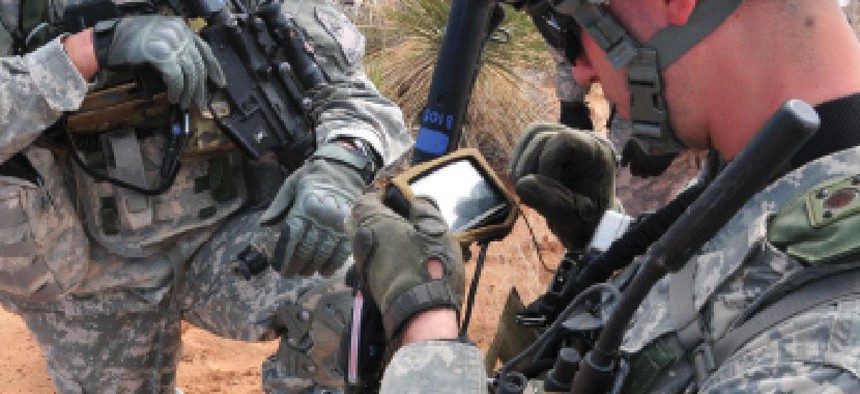Army official: Soldier needs should drive tech acquisition

The Army, and the DOD more broadly, must build out tech acquisition requirements based on the needs of the soldiers in the field, not commanders or acquisition officials, says one Army official.

When it comes deciding what IT to acquire for the Army’s converging networks and applications, talk to the soldiers on the ground before building out acquisition requirements, one Army official said.
Michael McCarthy, division chief in the LandWarNet Division, Army Capabilities Integration Center, said that too often, network and IT modernization programs are hampered by requirements that serve commanders or acquisition officials rather than end users.
On top of that, the Army has often accepted immature technology without building in the flexibility to adapt to new advances.
"What we need to do is work that process so that it becomes more responsive to the operational needs," McCarthy told FCW at the Military Network Modernization summit.
"At the same time … take advantage of that velocity of change within the civilian sector, particularly with IT [and] mission command."
Years ago when he ran the Army's Connecting Soldiers to Digital Applications program, McCarthy said officials wanted him to dictate what phone and operating system should be used. He cautioned that the technology was in flux and the Army should look ahead at where technology might go.
"We let the marketplace determine what the best solution was," he said. "Maybe that's an approach we need to look at for modernizing our systems -- is build them so that it doesn't matter what the next generation is. It has to work."
He said his first move was to step back and get a wider aperture on the problem.
"[We] let the people who are using [the technology] tell us what the most critical pieces of it are so that then we can start focusing on those things," he said.
Then, he had to contend with an acquisition process that was biased towards specific solutions -- a requirement to purchase a cellphone, for example, rather than a requirement to purchase a capability that could be met by a cellphone or another device.
McCarthy said the Army must define requirements around capabilities, "and then when we go to industry to acquire it, instead of telling them, 'You've got to use this battery or this solution' ... say, 'We need it to do this. Industry, you tell us what the best is we can afford.'"
There is an ongoing push to change the acquisition process to focus on operational requirements, he said, and to do so at a pace more in line with technological innovation. "That's going to take a culture change, not just a policy change," he said.
Army Chief of Staff Gen. Mark Milley recently launched a deep dive of the IT acquisition process and will only approve new purchases once he has been given a clear explanation of what purpose the acquisition will serve, McCarthy said.
"[Army leaders] have recognized they've got to make changes; right now we're still at that 'how do we do that?'" he added.
NEXT STORY: Do we still need systems integrators?





